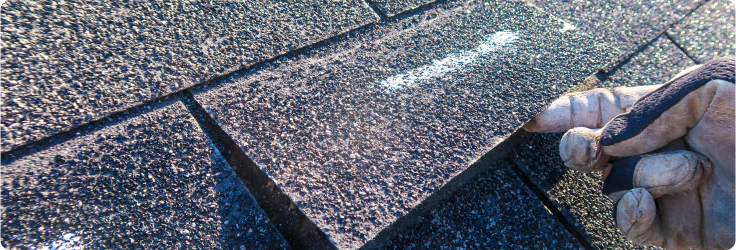Fixable (but not catastrophic) problems
Common issues like aging water heaters, minor roof repairs, or plumbing leaks can often be resolved by requesting seller repairs or a closing credit.
What happens after a home inspection depends on your ability to face the facts about the property honestly. Buying a fixer-upper might seem fun, but sometimes the smartest move is to walk away from the sale.

With low housing inventory and fast-moving sales, many buyers are taking bigger risks to secure a home. In fact, 6% of buyers purchase a home based solely on virtual tours or open houses, never stepping foot inside before closing. Additionally, 25% of buyers are waiving appraisal contingencies.
While these aggressive moves may speed up the process, they also increase the chances of overlooking serious issues and making a decision you regret. That’s why a thorough inspection is so important. It gives you the power to make informed decisions— to separate manageable repairs from deal-breaking red flags— and to walk away after home inspection when the risks outweigh the rewards.
Buying a home? A warranty helps avoid costly repairs later.
A home might look like a dream come true on the surface, but a home inspection lets you know what’s really going on under the hood. It’s your chance to uncover hidden issues— like a cracking foundation or an ancient electrical system— before signing on the dotted line.
For buyers, an inspection is a crucial safeguard against unforeseen costs and safety hazards. For sellers, it’s a reality check on what might need fixing before putting a home on the market. Either way, it’s about knowing what you’re getting into and making an informed decision. Some problems can be negotiated, but others let you know when to walk away from a house after the inspection.

Not every issue that pops up during an inspection is a dealbreaker. After all, you’re capable of handling a slightly leaky faucet or a bit of peeling paint. But some problems can threaten your safety, drain your wallet, or even make the home unlivable. Encountering any of these red flags might mean that it’s time to walk away after the home inspection:
A strong foundation is non-negotiable. If an inspection reveals deep cracks, sagging floors, or bowed walls, you could be looking at major stability problems. Signs of sinking or uneven settling can also spell trouble, potentially requiring extensive (and expensive) foundation repairs.
Roofs don’t last forever, and replacing one isn’t cheap. If an inspection reveals significant leaks, missing shingles, or a roof that’s at the end of its lifespan, you’ll need to consider the cost of a full replacement, especially if the seller isn’t willing to budge on price.
Old or faulty wiring is more than inconvenient— it’s a fire hazard. If the home’s electrical system includes outdated knob-and-tube wiring, insufficient amperage, or a breaker panel that’s not up to code, you could be in for a pricey (and essential) upgrade.
If you’re seeing low water pressure, persistent leaks, or signs of water damage and mold, the plumbing system may be on its last legs. Water damage repairs can add up quickly, and mold remediation can be a health concern.
A failing heating or cooling system can be especially costly to replace. If the HVAC system is old, poorly maintained, or simply ineffective, you might be looking at thousands in repairs or a full replacement.
Mold, asbestos, and radon are serious concerns. These hazards can pose health risks and often require specialized remediation. If they show up in an inspection report, it’s worth weighing the risks.
A few ants in the kitchen? Not a dealbreaker. Termites in the walls or rodents in the attic? That’s another story. Pests can cause structural damage that isn’t always visible at first glance, and getting rid of them isn’t always as simple as calling an exterminator.
Water should flow away from the home— not pool around it. Improper drainage can lead to foundation issues, basement flooding, and long-term water damage. If an inspection reveals standing water, poor grading, or inadequate drainage, consider the long-term implications.

Obviously, some issues are just part of homeownership, and no home inspection is going to turn up an utterly flawless home. But responding to those flaws doesn’t always mean taking on the full cost for them. After the house inspection, your next steps might involve negotiating with the seller if the report reveals manageable repairs. Here’s when you should consider pushing for repair credits or a price reduction:
Common issues like aging water heaters, minor roof repairs, or plumbing leaks can often be resolved by requesting seller repairs or a closing credit.
If major systems (HVAC, roof, water heater) are aging but still working, ask the seller to cover part of the replacement cost or lower the price.
Sellers are often willing to fix safety-related issues like outdated electrical panels or missing smoke detectors— especially if they could block a future sale.
Sometimes, no amount of negotiation can make a home worth the risk. When the problems are too big— or the seller won’t budge— it might be time to cut your losses. Here’s when to seriously consider walking away:
If major fixes like foundation work or rewiring exceed your budget, it might be smarter to walk away.
Issues like faulty wiring, structural damage, or environmental hazards (mold, radon) can put your safety at risk and are difficult to fix completely.
If the seller refuses to fix major problems or offer financial concessions, you may be inheriting costly headaches.
A long list of repairs, especially ones requiring specialists, can turn your dream home into a never-ending project.

Thorough inspection, confident protection.
Download our free Comprehensive Home Inspection checklist today to make sure you’re thoroughly examining your prospective home.
While a home inspection identifies current problems, it can’t predict what might go wrong down the line. That’s why after your house inspection, your next steps should involve talking to your real estate agent about adding an American Home Shield® home warranty plan to the sale.
A home warranty steps in to cover issues that arise after you move in, offering coverage for key areas like HVAC, plumbing, and electrical systems. When you’re unsure what to do after your inspection flags aging systems that still work now but may need attention later, adding a home warranty can offer the peace of mind that you’ll be taken care of. It’s an extra layer of protection that can make all the difference— especially when you’ve already invested so much in making the right decision.
Want to learn more about how home warranties revolutionize homebuying? Check out the Homebuyer Hub on the Home Matters blog for more buying and selling resources.
AHS assumes no responsibility, and specifically disclaims all liability, for your use of any and all information contained herein.